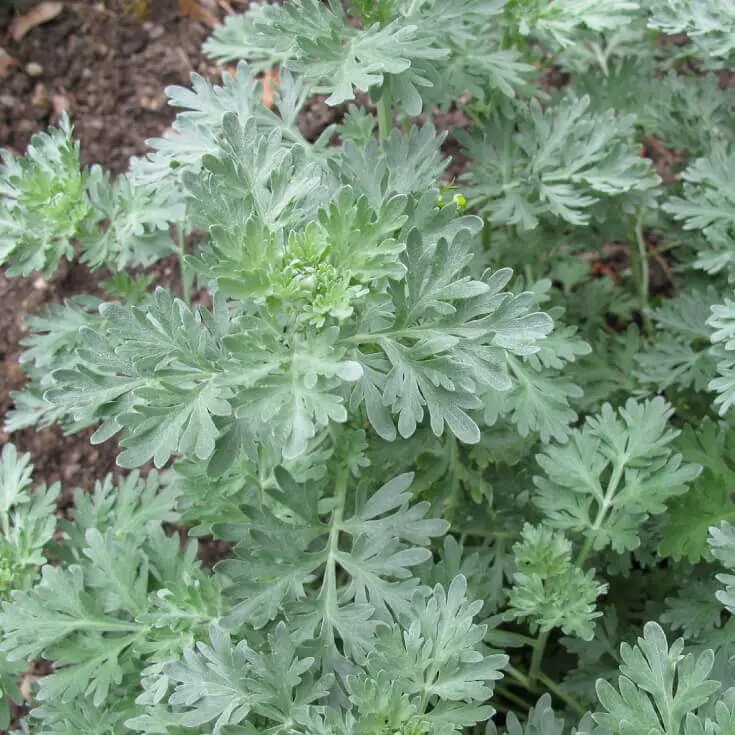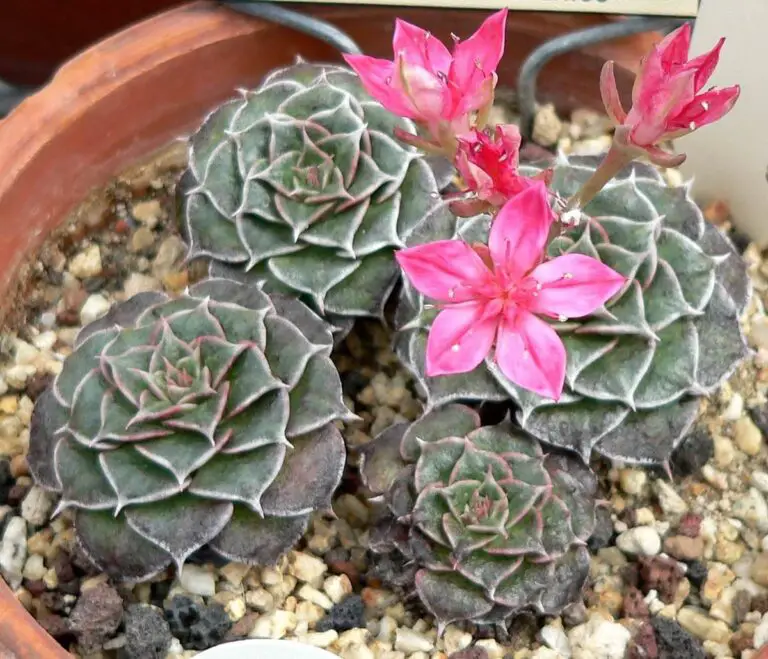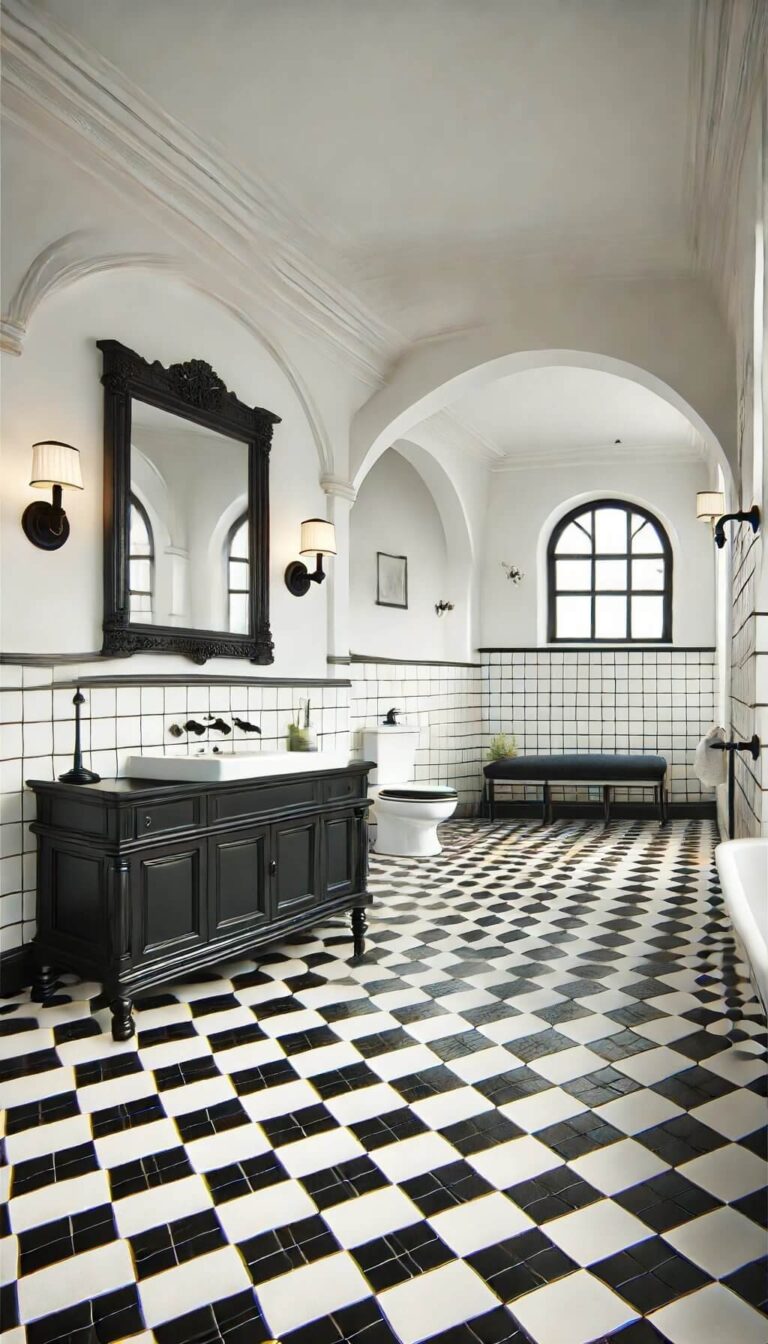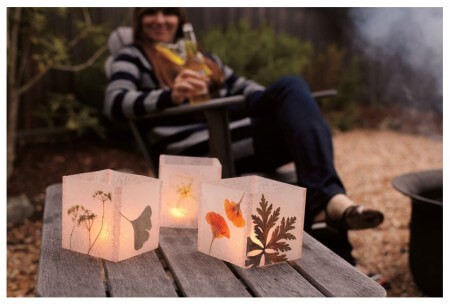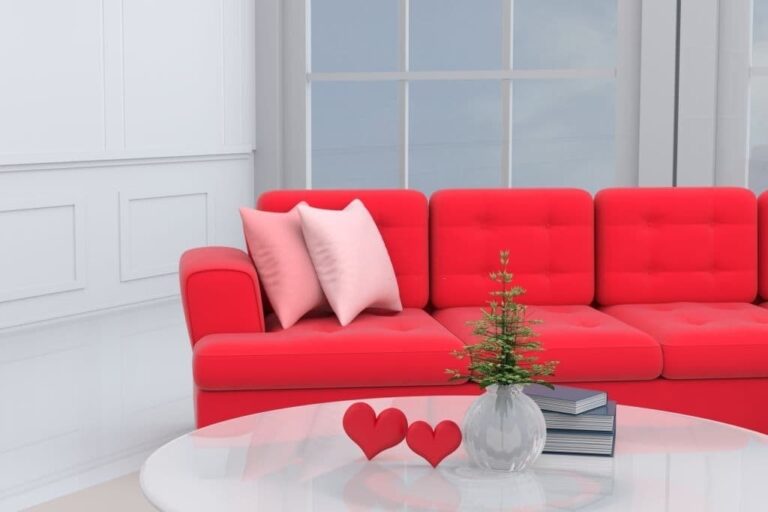19+ Different Types Of Carpets, Styles, And Pile Options (Buying Guide)
The timeless allure of carpet as a flooring option stems from its ability to provide cushion and warmth, reduce slipping and skidding, and offer a wide range of colors, designs, and textures. Whether used indoors or outdoors, in living spaces or extensions like patios and balconies, carpet is a practical choice. To make the right decision when selecting a carpet, it’s essential to understand the different types of carpets available.
Here, we’ll explore the major categories of carpets, including loop pile, cut pile, combination cut and loop pile, and sculpted pile, as well as the various fibers used in their construction. Additionally, we’ll discuss quality indicators like carpet pile fiber density, colors, padding, and face weight, as well as factors to consider when buying a new carpet, such as budget, space, effect on the room, maintenance, and warranty.
19+ Different Types Of Carpets, Styles, And Pile Options (Buying Guide)
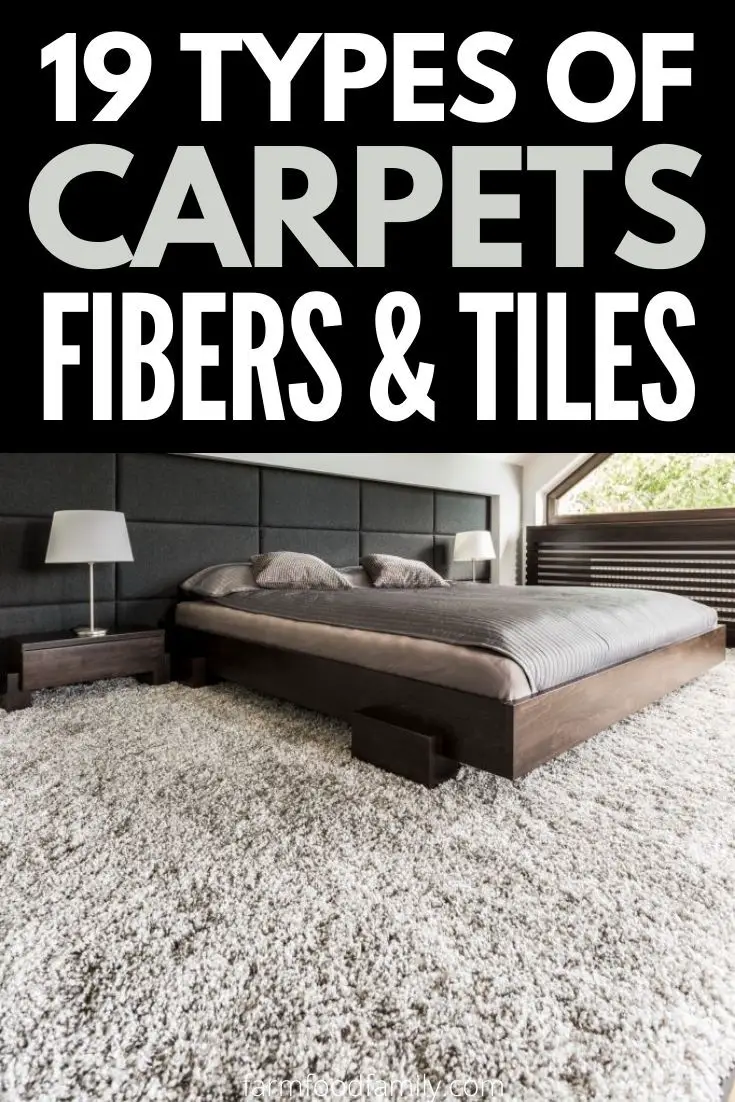
The carpet categorization goes beyond just the type of fiber used to create the pile. There are two fundamental categories based on how the backing is attached to the carpet: loop pile and cut pile. This distinction serves as a foundation for further exploration, including the lesser-known cut-loop combo and the most common natural fibers employed in carpet manufacturing.
A. Loop pile
Loop pile carpets stand out due to their unique characteristic – uncut fibers or yarns that form loops on the backing or around the carpet’s surface. Unlike cut pile carpets where fibers are trimmed to a specific length, loop piles maintain their natural texture and height, which can range from very short to quite tall. This distinct feature allows them to excel in terms of durability, making them an ideal choice for high-traffic areas.
Additionally, the uncut yarns enable these carpets to effectively conceal stains, further solidifying their reputation as a low-maintenance and practical flooring option.
Berber
The Berber loop pile carpet is a popular choice due to its durability and sleek aesthetic. Characterized by low-pile yarn loops that are tightly knotted, this type of carpet boasts denser yarns that provide superior stain resistance. This results in a long-lasting appearance that remains fresh-looking for an extended period. The neutral colors available, including speckled brown, beige, and gray, add to its modern appeal.
Typically placed in high-traffic areas such as hallways, stairways, basements, and bedrooms, the Berber carpet is an excellent option for homeowners seeking a stylish and low-maintenance flooring solution.
Level loop
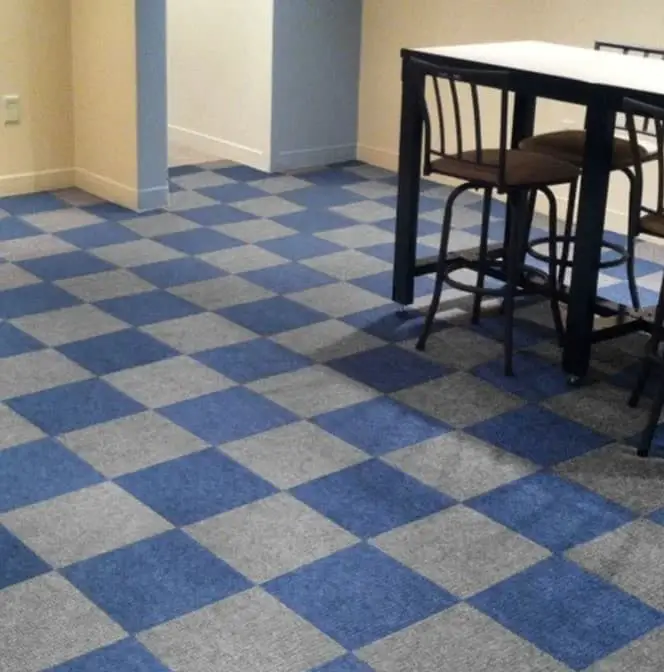
Crafted from uniform loops of yarn, this type of carpet presents a plush and consistent appearance. The small size of the loops not only contributes to its durability but also enhances its resistance to scratches and punctures. The looped design lends itself to a denser, more tightly woven look that is pleasing to the eye.
One of the key benefits of this type of carpet is its ability to hide vacuum marks and footprints effectively, making it an ideal choice for high-traffic areas like kids’ bedrooms and playrooms. Its cushioned surface also provides a soft landing for active toddlers, ensuring their safety and comfort.
Multi-level loop

This high-low loop pile carpet exhibits a more varied appearance compared to level loop, characterized by imprecise yarn cuts that create an uneven, spaced-out look. The name ‘high-low’ refers to the varying heights of some surfaces being higher piled while others are lower, resulting in an irregular texture that can produce unique patterns.
While this texture may present some challenges, such as the need for a stronger vacuum to prevent knotting, it also makes the carpet well-suited for medium-traffic areas and allows for easy maintenance by keeping the loops vertical.
Sisal
The sisal loop pile rug features a distinctive striped pattern created by parallel rows of knots. The height, texture, and patterns of sisal can vary, allowing for the incorporation of geometric designs to enhance its appearance. In terms of durability and stain resistance, sisal’s hard-weaving capabilities make it an excellent choice, although it may not possess the same neutral aesthetic as Berber options.
Cut pile
In contrast to loop pile carpets, the appearance of this type of carpet exudes a sense of sophistication and luxury. The manufacturing process involves looping yarns and subsequently cutting each strand at its apex, resulting in a unique characteristic where all the strands stand upright. This distinct feature gives it a softer and more refined visual aesthetic compared to traditional loop pile designs.
Saxony

The cut pile in question boasts a consistent, velvety texture, achieved through the precise cutting of yarns into uniform lengths. The densely packed fibers create a plush appearance that invites tactile exploration. While sharing some similarities with plush piles, this particular variety features slightly twisted threads and longer strands, albeit with a propensity to show stains and marks more readily than other options.
Despite its drawbacks, this carpet exudes an air of formal elegance and cozy comfort, commanding a premium price among the various carpet types.
Textured
Amazon offers a unique type of cut pile carpet, where yarns are first cut into varying lengths before being subjected to a specialized heat treatment that creates intricate spiral knots. The fibers are then pressed to preserve the twisted texture, resulting in an irregular surface that effectively conceals dirt, stains, and smudges. Notably, even if certain areas become crushed due to heavy foot traffic, the carpet’s unique design ensures that imperfections remain largely undetectable.
Frieze
When it comes to shopping on Amazon, one type of cut pile that stands out is the frieze carpet. Its unique texture is characterized by a combination of short and tall, thin and thick yarns, which are knotted in different directions and can even be twisted. This gives it a fuzzy appearance that’s often mistaken for shag piles, but what sets frieze apart is its longer strands. If you’re looking to add a playful and informal touch to your space, frieze is an excellent choice.
Additionally, darker colored frieze offers exceptional stain resistance and can withstand heavy foot traffic without showing visible signs of wear and tear, making it an ideal option for high-traffic areas.
Pattern
Amazon offers a range of patterned carpets that excel in both aesthetics and practicality. One popular option features a soft surface and versatile designs that can be customized with various images. The cut and loop pile knotting technique makes it easy to incorporate florals, geometric patterns, and more into the design.
While many may view patterned carpets as purely decorative, they often serve a functional purpose as well.
For instance, the patterns on these carpets can create an illusion of space in a room, making it appear larger than it actually is. Additionally, the designs are less likely to show vacuum marks, footprints, and stains, making them an excellent choice for high-traffic areas.
Plush pile
On Amazon, you can find plush piles, also known as velour carpet, which boast a remarkably soft texture that’s a delight to the touch. The strands are shorter and evenly cut, giving them a unique characteristic compared to other types of carpet. A closer look may reveal slightly twisted threads, but the densely packed nature of this carpet creates an impressively cushioned and padded feel.
While plush piles can be a great addition to any room, they’re not recommended for high-traffic areas due to their tendency to show wear and tear more easily than other types of carpet. This includes revealing marks, stains, and unevenness, making them less suitable for busy homes.
Cut pile twist

This premium rug boasts a luxurious texture that’s gentle on the feet, featuring a unique random finish. As its name suggests, it sports a high pile with slightly twisted strands arranged in diverse directions. Withstanding wear and tear, this rug is an excellent choice for high-traffic areas, effectively concealing footprints, tracking, and other marks. Whether you’re looking to elevate your home’s ambiance or seeking a practical solution, this rug is sure to impress.
Combination cut and loop pile
This combination carpet, comprising both cut pile and loop pile designs, brings a unique visual flair to any room. The varied textures, heights, and intricate geometric patterns that characterize this style create a striking aesthetic that can instantly elevate the ambiance of a space.
Level cut and loop pile
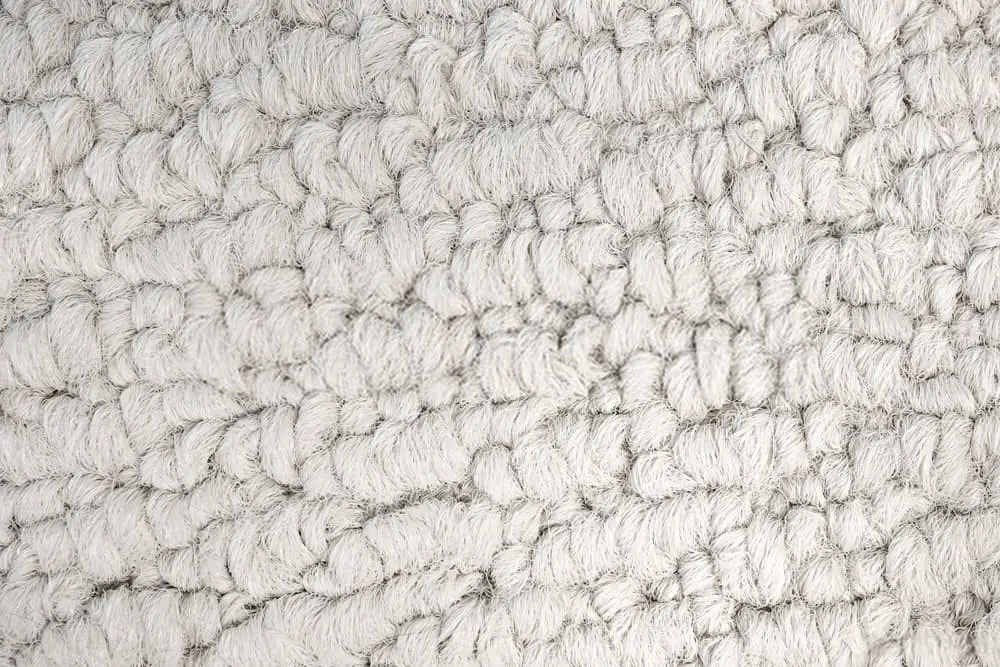
The unique characteristics of this carpet are evident in its exceptionally soft finish and luxurious surface, which owes its texture to the precise cutting and looping of strands into uniform lengths and patterns. The outcome is a densely woven yet plush pile with intricate designs that create a visually appealing symmetry. This deliberate pattern-making allows for an optical illusion, effectively expanding the perceived space within your room.
Textured cut and loop pile
Drawing inspiration from the iconic 80s sculpted pile, this contemporary version takes its cues from the art of knotting. Unlike traditional flatweaves, this carpet boasts a textured look thanks to its unique combination of high and low piles, where densely packed strands create an intriguing visual effect. Geometric patterns in bold colors, such as plaid and diamond motifs, bring a modern touch to any room, making it a stunning addition to contemporary interior design.
Sculpted pile

The ‘Cut and Loop’ pile of the 1970s and 1980s is characterized by its distinctive sculpted look, featuring a medley of random loops and undulating lines that evoke a sense of marbled grandeur. This style’s dramatic flair is further emphasized by its bold incorporation of both vibrant hues and muted tones, creating a visually striking effect that commands attention.
Carpet fibers
When it comes to carpets, the type of fiber used has a profound impact on the overall ambiance and functionality of a room. Not only does the fabric influence the texture and feel of the space, but it also plays a significant role in determining features such as stain resistance and durability. Among the many carpet fibers available, certain types stand out for their popularity and advantages. Let’s explore some of the most common carpet fibers out there.
Nylon
While shopping on Amazon, it’s worth noting that nearly 90% of carpets used in homes are made from nylon. This prevalence can be attributed to a combination of factors. Firstly, nylon is an affordable option considering its impressive lifespan of up to 15 years. Additionally, it boasts exceptional performance compared to synthetic fibers, particularly when it comes to resisting mold, mildew, abrasion, and staining.
Notably, nylon also ages well, retaining its original color vibrancy for a long time. One minor drawback is the potential to generate static energy, which may cause an unexpected tingling sensation on your feet from time to time.
Polypropylene (Olefin)
Amazon offers a budget-friendly synthetic alternative to wool, Olefin carpets, which account for 80% of commercial settings and are the second most popular residential choice after nylon. While this material has its advantages – it’s simple to clean and can withstand bleaching – it’s not without its drawbacks. On the plus side, Olefin is often used as a top layer for Berber designs. However, it has some limitations.
For instance, it tends to fade in sunny rooms and isn’t resistant to stains, oil-based substances, dirt, and mud. This means that while Olefin may be a practical choice for many spaces, it’s not ideal for areas with high exposure to light or heavy foot traffic.
Polyester
When it comes to shopping for a synthetic fiber carpet on Amazon, one option that stands out for its affordability and numerous benefits is polyester. One of its most attractive qualities is its ability to retain dye color, ensuring the vibrant hue remains intact for many years without fading. Additionally, polyester carpets are hypoallergenic, resistant to stains, moisture, molds, and mildew, making them a great choice for those who suffer from allergies or want a low-maintenance option.
However, it’s worth noting that polyester can absorb oils and may leave dark marks on the surface if not properly cleaned. Furthermore, high-traffic areas may cause the carpet to flatten easily, and it’s also not recommended to place it under heavy furniture as it can get damaged.
Acrylic

Acrylic carpets, also referred to as synthetic wool, boast fibers that closely resemble those found in natural wool. While they may not fool the discerning eye, their unique properties have earned them a loyal following. Notably, acrylic carpets exhibit exceptional resistance to mildew, mold, stains, and static electricity, making them an attractive option for many homeowners.
In terms of longevity, acrylic carpets hold up reasonably well against nylon counterparts, although they do show signs of wear when subjected to high-traffic areas. As such, they tend to thrive in low-to-moderate use settings like bedrooms and basements. It’s worth noting that acrylic carpets can be prone to fading if exposed to alkaline products used for bleaching, so caution is advised.
Wool
When it comes to shopping on Amazon, you may come across the premium carpet option that stands out from the rest due to its luxurious price tag. This particular type of carpet is renowned for its unparalleled softness, ensuring an exceptionally comfortable and high-end experience. What sets this carpet apart is its unique blend of intricately woven wool fabric, making it an excellent choice for individuals suffering from allergies.
Unlike mid-tier options that often combine acrylic fiber with wool to produce a more affordable product, this premium carpet remains true to its organic roots. However, as a natural fiber, wool does come with some limitations. It’s naturally prone to mildew and mold growth, which means it’s not suitable for rooms with high humidity or moisture levels. Additionally, its delicate nature makes it more susceptible to stains, requiring extra care and attention when it comes to maintenance.
Triexta

In recent years, a newcomer to the carpet market has gained significant traction, rivaling the popularity of nylon. This innovative material comes in both solid and patterned designs, boasting a surface texture akin to nylon. While it shares some similarities with its nylon counterpart, it also boasts several key advantages. Notably, it is extremely resistant to stains and is regarded as stronger and more durable than nylon, with a lifespan that can exceed 20 years.
However, this superior performance comes at a price – it is even more expensive than the highest quality nylon.
Quality indicators for carpets

When it comes to selecting the perfect carpet for your space, understanding the key quality indicators is crucial. While it may seem overwhelming, mastering these standards can ensure you get the best results. From padding and height to weight and more, here’s what you need to know when shopping for carpets that meet your needs.
Carpet pile fiber density
The quality of a carpet can be determined by its pile fiber density, with denser carpets generally indicating higher quality. To assess this, run your hand over the carpet’s surface and if you feel the backing material, it suggests that the carpet is not dense enough. In fact, according to the Carpet and Rug Institute (CRI), a recommended minimum pile fiber density for high-traffic areas is 5000 or higher.
Carpet colors
When it comes to choosing carpet colors, homeowners are spoiled for options. While there is no denying the enduring popularity of neutral shades like beige, grey, and brown – which often take top spots on the list – other vibrant hues are also gaining favor. In fact, a glance at current trends suggests that bold colors like black, green, orange, pink, purple, red, white, and yellow are all fair game.
And for those who prefer something a little more playful, multi-colored options offer endless possibilities.
Carpet padding
Carpet padding plays a vital role as the underlayment between the subflooring and the base of the carpet where the strands are attached. This crucial material ensures the carpet remains stable, non-slip, and non-skid, while also providing insulation to the room and creating softer surfaces. With various types to choose from, it’s essential to understand the characteristics of each:Prime foam is a popular option, comprising polyurethane and recycled materials.
Its density makes it ideal for high-traffic areas, as it won’t sink or lose its shape. Additionally, its affordability and air pockets make it a practical choice. Memory foam is renowned for its softness and stability, retaining its form even after extended use. However, due to its tendency to stretch over time, it’s best suited for low-traffic rooms. Fiber padding, made from synthetic fibers like nylon, felt, and polyester, offers a thinner, more economical alternative to foam-based options.
Its durability makes it suitable for denser carpets like Berber, but it’s susceptible to mold growth and lacks hypoallergenic properties, making it less desirable for residential settings. Rebonded padding is a versatile option that caters to different carpet types with its adjustable cushioning height and thickness. This cost-effective solution not only adds insulation but also provides a protective layer against carpet wear and tear, making it an excellent all-around choice.
Carpet pile height
When it comes to carpet pile height, there are three distinct categories. At the lower end of the spectrum, pile heights measure less than 0.25 inches. Medium-height piles fall within the 0.25- to 0.5-inch range, while the highest category spans from 0.5 to 1 inch. Notably, carpets with a pile height of 0.75 inches or above are typically classified as plush, as they offer an even softer and more luxurious surface.
Carpet face weight
The durability of a carpet largely hinges on its face weight. When selecting a high-quality carpet, it’s essential to opt for one with a minimum face weight of 35-ounces. However, this threshold also depends on other factors such as the carpet’s density, twist level, and intended room traffic. A heavier face weight is generally more suitable for areas with heavy usage, while lighter options may be better suited for lower-traffic spaces.
How to decide which rooms are best suited to carpet
When selecting the ideal carpet for a specific room, it’s essential to consider whether the space is subject to heavy foot traffic or not. By understanding the unique demands of each area, you can make an informed decision that suits your needs. Here’s a comprehensive guide to help you choose the perfect carpet for your rooms:
For stairways and landings, where durability and stain resistance are crucial, short pile nylon carpet is an excellent choice.
In hallways, Berber carpet is a popular option due to its low-pile design that withstands wear and tear effectively.
In bedrooms, the softness and warmth of nylon or wool carpet make it an ideal selection for creating a cozy atmosphere. For family rooms and living areas where comfort and durability are key, Berber or frieze carpet can be a great option.
When it comes to dining rooms and kitchens, cotton or sisal carpet is suitable due to its easy maintenance and resistance to spills.
For individuals with allergies, nylon and pile loop carpets offer a hypoallergenic solution.
High-traffic areas require carpets that can withstand heavy usage, such as nylon and polyester options. Soft carpeting for bedrooms and living rooms often features Berber or plush pile designs, while luxury carpeting calls for wool. For homes with elderly residents, short pile and pile loops provide a safe and comfortable choice.
Carpet prices
The cost of carpeting is primarily determined by the area it will cover. On average, carpets fall within a range of $2 to $15 per square foot. When it comes to installation, DIY enthusiasts can expect to pay around $1 per square foot, while professional installers start at $25 per square foot. Considering these estimates, it’s reasonable to budget at least a few dollars for carpeting.
Where to buy online carpet?
Carpets are a staple in home improvement, making them easily accessible at local stores, major department store outlets, and online retailers. In fact, you can find a wide range of carpet options by shopping online at places like Istanbul Rug, Rugs USA, The Rugs Store, Target, Urban Outfitters, Revival Rugs, Wayfair, Macy’s, West Elm, IKEA, Home Depot, Cold Picnic, Amazon, Lowes, Empire Today, Abbey Carpet and Floor, Carpet One, Carpet Express, and even Costco.
With so many options available, you’re sure to find the perfect carpet for your home.
Carpet installation
When contemplating a DIY carpet installation project or seeking professional help, understanding the various approaches is crucial. In reality, there are three primary methods of carpet installation, each with its unique characteristics.
Glue down carpet installation
The most common and straightforward carpet installation method is known as direct glue down, with a variation called double glue down. Both methods share some benefits and drawbacks.
Direct Glue Down: In this approach, the carpet is directly attached to the flooring without the need for padding. This provides solid support and minimizes movement, making it an excellent choice for high-traffic areas or wheelchair-accessible spaces.
Additionally, it eliminates the risk of buckling in climate-controlled environments and boasts a durable design suitable for larger rooms. However, this method does not incorporate carpet padding, which can make replacement more challenging.
Double Glue Down: This alternative involves attaching pads to the flooring before laying down the carpet. The resulting installation is characterized by increased comfort, better insulation, and a longer lifespan.
While it offers many benefits, double glue down also comes with a higher upfront cost.
Stretch-in carpet installation
The most common method of installation for residential settings involves using tackless strips made from wood, which are secured around the perimeter of the floor through nailing or gluing. The process begins with laying padding from the middle outwards, followed by pinning the carpet to the padding using pins. As the final step, the carpet is stretched to fit the perimeter of the room.
This approach offers several benefits, including efficient and easy installation, assured insulation and comfort provided by the padding, and a long lifespan. However, it’s not recommended for large areas or high-traffic spaces that require heavy foot traffic or rolling wheels. Additionally, this method excels with patterned and textured carpets, making it an ideal choice for those looking to add visual interest to their space.
Cut to fit carpet installation
In contrast to bona fide installation techniques, this method involves customizing carpeting to fit a specific room. This approach commences with cutting the carpet to size, after which it is directly secured either onto a pad or directly to the floor. Effectively, you simply need to tailor the carpet’s dimensions and then select from among the initial two carpet installation methods.
Factors to consider when buying a new carpet

When it comes to purchasing a carpet for your home, it’s essential to approach the task with a thorough understanding of what makes a good investment. A well-chosen carpet can elevate the aesthetic and functionality of your space, but a poorly selected one can lead to disappointment and frustration. To ensure you make an informed decision, consider the following key factors when buying a new carpet for your home.
Budget
When it comes to determining the cost of carpet installation, one crucial factor is the material itself. The type of carpet, its texture, density, height, and other characteristics all impact the final price. For instance, larger rooms require significantly more carpet, which can drive up costs to thousands of dollars. Even smaller spaces, however, may still necessitate a substantial investment, potentially exceeding $100 for high-end options.
Space
When it comes to selecting the perfect carpet for a given space, one crucial consideration is how the room will be used. To cater to high-traffic areas, such as those with frequent footfall or heavy usage, denser and more textured options paired with low-pile carpets are ideal choices. In contrast, smaller, low-traffic spaces like bedrooms or home offices can accommodate plush and high-pile carpeting, which offers a softer and more luxurious feel.
Meanwhile, rolling traffic areas that require ease of movement and quick cleaning may benefit from dense and low-pile carpets, which provide the necessary balance between functionality and aesthetics.
Effect to the room
When selecting a carpet for a room that’s connected to space, it’s essential to consider how your chosen flooring will impact the overall ambiance. Textured carpets are ideal for hiding stains and dirt, ensuring a tidy appearance even in high-traffic areas. On the other hand, if you’re looking to create an illusion of more space, opt for lighter-colored carpets with geometric patterns that can visually expand the room’s dimensions.
Maintenance
While some carpet styles and textures may be more finicky than others, it’s essential to consider maintenance needs when selecting a carpet for your home. Low-pile carpets, for instance, typically require less upkeep compared to high-pile ones. Additionally, carpets with twisted or uneven fibers can prove challenging to clean. By understanding these differences, you’ll be better equipped to choose the right carpet that suits your lifestyle and cleaning habits.
Padding
When it comes to creating a comfortable and energy-efficient living space, homeowners should give carpet padding the attention it deserves. By providing extra cushioning, insulation, and sound absorption, high-quality carpet padding can significantly enhance the overall experience of walking on soft floors. With multiple types of carpet padding available, selecting the right one for your needs is crucial.
Warranty
When selecting a carpet brand, prioritize those that offer comprehensive insurance options and extended warranties. Look for manufacturers that transparently outline the scope of their insurance coverage, ensuring you’re well-equipped in case any issues arise. Additionally, consider the level of customer support provided by each brand, as a reliable service network can be just as important as the product itself.
Professional installation
When considering a DIY carpet installation, it’s tempting to think that simply gluing down or stretching out the carpet will be sufficient. However, without proper expertise, this approach can lead to long-term issues such as rippling and buckling. For those new to carpet installation, consulting with a professional is highly recommended to learn from their experience and avoid costly mistakes later on.
FAQs
While we’ve already touched on several crucial factors to consider when selecting the perfect carpet for your home, there’s still more to explore. In addition to what we’ve discussed thus far, understanding various types of carpets can be a game-changer in making an informed decision. Here, we’ll delve into some additional insights that will help you make the most suitable choice for your space.
What is the most popular style of carpet?
In recent years, textured carpets have emerged as a clear favorite among homeowners, retaining their top spot in the popularity rankings for a remarkable five-year stretch. The secret to their enduring appeal lies in their unique construction, which combines two-toned yarns or fabric to create a twisted design that’s remarkably resilient when it comes to withstanding dirt, mud, and stains.
This understated aesthetic also makes them a popular choice for bedrooms and living rooms alike, where they bring a sense of calm and serenity to the space. Furthermore, these carpets are notable for their exceptional durability, soft texture, generous cushioning, and low-maintenance requirements, making them an excellent option for busy households.
Should carpet be lighter or darker than walls?
When it comes to selecting a carpet that makes a bold statement, there’s a general guideline to consider. For maximum visual impact, it’s recommended that the carpet color be two shades darker than the lighter walls and two shades lighter than warmer, darker walls. This approach can greatly enhance the overall aesthetic of your room. Additionally, if you’re looking for a durable option that can withstand heavy foot traffic, darker carpets are often an excellent choice.
However, as a safer bet, neutral colors typically remain the most versatile and timeless option.
What color carpet hides dirt best?
When it comes to carpet colors that excel at concealing dirt, there are a few top performers worth considering. In addition to black, dark brown, blue, and green all demonstrate impressive ability to hide dirt. On the flip side, lighter options like light green, pink, and multi-colored or patterned carpets also do an excellent job of minimizing dirt visibility.
What is the best time to buy carpet?
When it comes to purchasing carpets, late spring and early winter are ideal periods. Not only do holidays like Christmas and Thanksgiving bring discounts, but the markdowns can be quite substantial. Additionally, retailers often extend their operating hours, adjust their schedules, and offer more comprehensive warranties during these times, making it a great opportunity to find a good deal on a carpet.
What kind of carpet is best for a hotel?
When it comes to selecting carpets for a hotel, hospitality management standards emphasize the importance of durability and stain resistance. Among the top options are sisal, wool, nylon, and polypropylene, which are all designed to withstand heavy foot traffic. These materials boast impressive resistance to stains, ensuring that any spills or accidents can be easily cleaned without compromising the carpet’s integrity.
What carpets can be dyed?
When it comes to updating the color of your carpet, several popular options can be dyed to suit your preferences or refresh their appearance when colors start to fade. Among these, nylon, wool, acrylic, polypropylene, and polyester are all suitable for dyeing using various methods. These include wand spraying, aerosol spray cans, and nylon bristles, offering homeowners a range of ways to customize the color of their carpets.
Can carpets be painted?
When it comes to revamping carpets, there are specific types that can benefit from a fresh coat of paint. Berber, jute, sisal, and seagrass carpets are the most suitable for this type of makeover, as they can be easily transformed using upholstery paints. However, plush carpets should be avoided at all costs. Applying paint to these soft, luxurious fibers will result in a matte, stiffened surface that’s no longer suitable for use.
In what rooms is carpeting a poor choice?
When it comes to choosing the right flooring option for a room, several factors come into play. One such factor is the level of moisture present in the space. Rooms with excessive humidity, dampness, or poor insulation are often ill-suited for carpeting. This is particularly true for areas like kitchens, bathrooms, and basements, where the likelihood of water damage or mildew growth is higher.
While it’s not impossible to install carpet in these spaces, it may be more challenging to maintain and can even lead to costly repairs down the line. In contrast, rooms with drier conditions and proper insulation can often benefit from the comfort and aesthetic appeal of carpeting.
Can carpeting be patched?
While it’s possible to tackle carpet patching on your own, it’s often wiser to seek guidance from professionals. However, for those who prefer a DIY approach, there are video tutorials available that provide step-by-step instructions on how to perform the task using specialized kits and adhesive disks. If the damage is extensive or you’re unsure about your ability to make a proper repair, investing in a new carpet may be the most practical solution.
How often should carpets be cleaned?
To maintain the longevity of your carpet fibers, it’s essential to follow a regular cleaning schedule, as advised by the Carpet and Rug Institute. This involves deep cleaning your carpet every 12-18 months. Effective methods for deep cleaning include washing, scrubbing, and steam cleaning, all of which can help remove dirt and debris that can damage the fibers over time.
Can you put carpeting over tile?
Before installing the carpet, it’s crucial to remove the tile flooring first. Once that’s done, you can use the stretch-in room method to put down the carpeting. To start, install tackless strips along the baseboard at a distance of 1.5 inches from it. For added security and a tight fit, be sure to attach the carpet fibers to these strips using a power stretcher.
Can used carpeting be sold?
Thrift shops, flea markets, home goods and decor stores, as well as private listings and online auction sites are common places where you can find vintage maps. When scouring for them, ensure that the ones you select are in a condition that’s acceptable to you, with minimal repairs and edges still intact. This is crucial in preserving their original charm and historical significance.
Can used carpeting be recycled?
While it’s often assumed that only certain types of carpets can be recycled, the reality is that all carpet types have the potential to be repurposed. One common method involves returning used carpets to their original manufacturers, who then facilitate the recycling process. Here’s how it typically unfolds: first, the fabric portion of the carpet is carefully separated from its backing.
These two components are then treated separately, broken down into their most basic forms and reformed into new products – including, of course, carpets themselves, as well as other textile goods.
Can you immediately put furniture over the newly carpeted area?
When introducing new furniture to a freshly installed, glued-down carpet, it’s essential to allow a sufficient amount of time for the adhesive to fully set. A minimum of 24-48 hours is recommended before placing any heavy objects or moving furniture over the newly carpeted area. Failure to do so can lead to unforeseen consequences, including damage to your flooring and potentially compromising its stability.
What temperature should the carpet be installed?
When it comes to laying down a new carpet, it’s essential to maintain a consistent indoor climate. In particular, a room temperature range of 65°F to 80°F is recommended for a period of 48 hours both preceding and following the installation. This allows for optimal conditions that facilitate proper bonding between the carpet fibers and the subfloor.
Conclusion
In conclusion, investing in carpeting for your home is a wise decision due to its unique alternative to traditional flooring options such as concrete, tile, and hardwood. By installing carpets, you can instantly create a cozy and inviting atmosphere that makes your space feel more like a home. However, selecting the right carpet and maintaining it properly can be overwhelming, considering various factors that come into play.
To make an informed decision, it’s essential to weigh these factors carefully and prioritize what matters most to you. By doing so, you’ll be well-equipped to choose the ideal carpet for your space.

